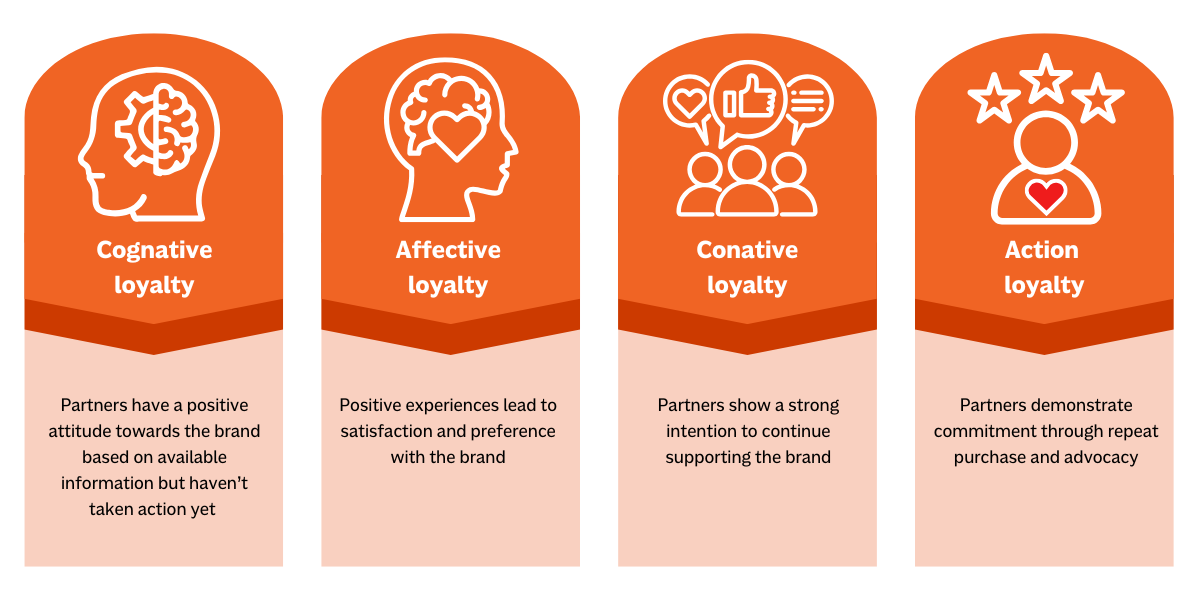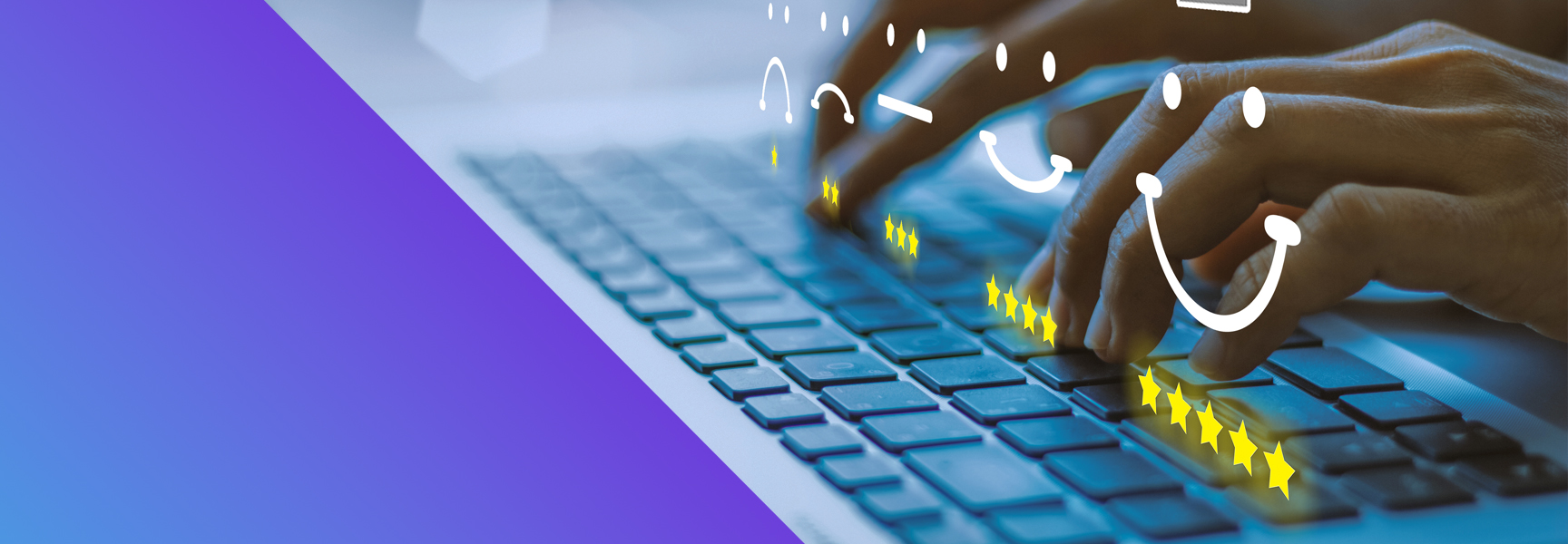In the world of channel partner incentives, the trend is to encourage specific behaviours and personalize rewards beyond just hitting performance targets for rebates.
However, when it comes to building end-customer loyalty through a distribution channel, a well-designed tiering system remains one of the most effective and easy-to-understand structures. Let’s explore how we can leverage tiering to help clients maximize their channel incentive and loyalty programs.
What is tiering in channel loyalty programs?
Tiering is a method of structuring loyalty programs where customers are placed into different levels or “tiers” based on their engagement or purchase behaviour. Each tier offers different benefits, with higher tiers providing more attractive rewards.
Examples of successful loyalty programs include Starbucks Rewards, which offers a tiered program where members earn stars for purchases, with tiers offering different benefits such as free refills, birthday rewards, and personalized offers based on their purchase behaviour.
Similarly, the Delta SkyMiles program includes tiers like Silver, Gold, Platinum, and Diamond Medallion, where members earn Miles and enjoy benefits such as priority boarding, access to lounges, and free checked luggage.
Getting the most from your channel loyalty program tiers?
At BI WORLDWIDE Canada, our approach to designing an incentive loyalty program starts with understanding:
- The client’s vision of loyalty: What does end-customer loyalty look like for the client, and where are they on their loyalty journey?
- Historical data: What does past purchase behaviour tell us? Are there regional differences?
- Effective timing: At what point in the customer relationship is the program most effective, and how do rewards positively influence behaviour?
Establishing tier levels and their benefits is crucial for setting realistic return on Investment (ROI) goals. The benefits should be appropriate, motivational, and the tiers achievable. Balancing the value generated by product margins and the timing of benefits is key to securing customer loyalty.
Using a loyalty framework
We use a loyalty framework to determine the program’s priorities. Are we aiming to shift business customers from just liking the brand to consistently buying from it? Or are we rewarding consistent loyalty and encouraging advocacy? The right structure can achieve all these goals, but the benefits must be supported by the margins produced.
The four-stage loyalty model
One example foundational framework is Oliver’s model, which describes customer loyalty progression through four stages:
1. Cognitive Loyalty (Attitudinal)
Partners have a positive attitude towards the brand based on available information, but haven’t taken action yet.
Example: An installer knows a brand has high-quality products and good service, but hasn’t started using them.
2. Affective Loyalty (Attitudinal)
Positive experiences lead to satisfaction and preference for the brand.
Example: After using the brand’s products and experiencing excellent service, the installer prefers this brand over others.

3. Conative Loyalty (Behavioural)
Partners show a strong intention to continue supporting the brand.
Example: The installer recommends the brand to others and is committed to using it, even when faced with minor issues.
4. Action Loyalty (Behavioural)
Partners demonstrate commitment through repeat purchases and advocacy.
Example: The installer consistently chooses this brand for all projects and promotes it to peers, not wanting to lose the rewards and benefits.
5 tactics to influence channel loyalty
To move channel partners through these stages and tiers, we use specific tactics that align with the tiering structure.
Influencing attitudinal loyalty
Attitudinal loyalty is about partners’ positive perceptions and attitudes towards the brand before they take any action. Tactics here are designed to help build a strong emotional connection and positive perception:
1. Referrals (Social Proof)
Encourage existing partners to recommend your brand to others, enhancing their perception and commitment. This can be particularly effective in lower tiers to help partners move up to higher tiers by increasing their engagement and loyalty.
Example: Offering a bonus for every new partner they refer to your program can help partners in the lower tiers advance to higher tiers.
2. Service Focus (Confirmation Bias)
Highlight benefits and superior service to affirm their choice, especially in lower tiers, to develop behavioural loyalty. This helps new partners feel more confident and motivated to reach higher tiers.
Example: Spotlighting success stories from other partners can reinforce positive perceptions and encourage partners to strive for higher tiers.
Influencing behavioural loyalty
Behavioural loyalty, characterized by consistent repeat purchases and commitment to the brand, is the ultimate goal. The FOGG Behaviour Model explains how behaviour is influenced by motivation, ability, and triggers. For a behaviour to occur, these elements must converge, and this convergence can be strategically aligned with tier progression.
3. Build anticipation
Create emotional triggers that generate hope for a positive outcome or fear of a negative one. This can motivate partners to advance to higher tiers to avoid missing out on exclusive benefits.
Example: Tease exciting new features (hope) or emphasize the risks of missing out (fear), encouraging partners to aim for higher tiers.
4. Create belonging
Leverage social proof and the desire to belong to a group. Higher tiers can be positioned as exclusive communities, motivating partners to advance. Importantly, consideration should be made as to how you maintain a sense of exclusivity in higher tiers to not demotivate members through over-subscription.
Example: Showcase testimonials from satisfied customers or highlight the benefits of being part of an exclusive community, encouraging partners to move up tiers.
5. Become a facilitator
Make desired behaviour easier by increasing ability. This can help partners in lower tiers gain the skills and confidence needed to reach higher tiers.
Example: Provide step-by-step guides and personal support to help partners in lower tiers advance.
Strengthen loyalty throughout your partner journey
BI WORLDWIDE Canada research, conducted with KANTAR, showed that operational excellence is key to partner (or business-to-business customer) satisfaction. This means that for a channel incentive or loyalty program to be effective, it must be simple to understand, and the benefits must be well-perceived and valuable to the recipients.
Added to this, other key considerations such as tier qualification criteria and impactful communications help brands create effective channel incentive and loyalty programs that drive high levels of engagement and loyalty.
At BI WORLDWIDE Canada, we’re continuously reviewing research and program insights to ensure our approach to channel program design is effective at motivating behaviour and measurable results for our clients.
